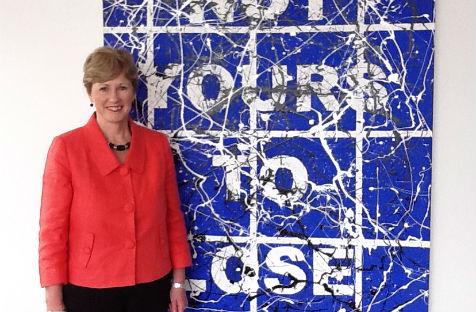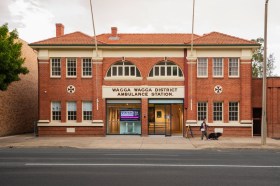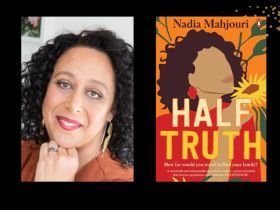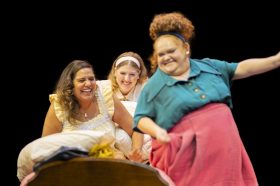I am passionate about the Arts because it is key to achieving our personal potential and the transformation of Australia from a resource based economy to a knowledge and information based, innovative and creative society capable of facing the major challenges of this century.
Throughout my lifetime I have watched visual and performing artists contribute in a hugely significant way to social and environmental change and was reminded of that recently when I visited Reina Sofia Gallery in Madrid to see the fantastic exhibition of Encounters with the 1930s which highlighted how art and power joined force during the Spanish civil war.
Artists have been involved in every major social change campaign in Australia from Max Angus and Olegas Truchanas in the Lake Pedder days to the Franklin River campaign in which Peter Dombrovkis’s photograph of Rock Is Bend was instrumental in changing hearts and minds.
The latest example is the transformative power of MONA in Tasmania. It is the best investment in the future of the state made in decades. Not only has it brought people from all over the world to Hobart, it has encouraged a new edginess and confidence in Tasmania.
One brilliant example of this is the MONA FOMA festival in Hobart, which I’ve just had the pleasure of attending. It has had such a transformative effect on Hobart and Tasmania, bringing tourists from across Australia and overseas, putting Hobart at the top of the list of must-see destinations. It helped local businesses – festival goers also enjoy Tasmania’s local whiskey distilleries, microbrewers, wines and local galleries and markets, businesses which are thriving. It makes Hobart exciting, and the festival’s fun ideas, expressed through music, performance, installations and food move people to think and wonder.
Wherever I go I visit galleries and concerts and walk the streets to enjoy street music and theatre as it is the best way to gain insight into a community. In Sri Lanka last year I was alarmed by the practices of the Rajapaksa government and so I headed for a gallery to view political art. To cut a long story short I bought what was described as “the most controversial” painting in Sri Lanka, namely a painting by Chandragupta Thenuwara called This is Not a White Van. It highlighted the fact that political dissidents and their families are disappearing at an alarming rate in white vans, a fact denied by the government. I have hung this powerful painting in my Parliament House office to draw attention to human rights atrocities.
Art holds up a mirror to society, it is a powerful expression of political and social critique, it documents our history and it explains who we are as a people and a culture.
The Greens’ vision for Australia is one that moves away from a dig it up, cut it down and ship it away economy, to one that is diverse, clean, and clever. We want to reign in our rampant fossil fuel extraction which is fuelling dangerous climate change, and invest in a healthy and innovative society. The Greens appreciate art for art’s sake, and politically we recognise the arts’ central place in improving the vibrancy of cities, towns and communities, improving quality of life, attracting visitors and businesses, and inspiring innovation across the board.
I want the arts to be a major component of the Greens’ campaign as we prepare for the election.
Last week we released our arts policy which includes $3 million a year Artist Fund to provide better pay for artists for their exhibitions and performances, $5 million a year to support innovation in the performing arts, and $2 million a year to help performing artists on tour. We are good negotiators and we intend to deliver. Last year through persistent negotiation with Arts Minister Simon Crean we secured $40 million from the federal government to insulate our national cultural institutions, the National Gallery, the National Museum, the National Library, and the Film and Sound Archive among others, from the Government’s ‘efficiency dividend’.
We have also been campaigning strongly for a tax offset of 30% for all movies filmed here. This is gaining traction politically after Wolverine was granted this offset, it would help the myriad jobs that are involved in such productions, and use and build on local talent.
Investing in the arts in this way keeps talented people in Australia, supports local innovation and inspires further innovation. It provides for a richer quality of life, enhances vibrancy in the community, and also helps economic activity.
While Labor and the Liberals bicker about a budget surplus we have produced time and time again costed policies to show how we can save money to spend it where it’s most needed – we could make $26 billion from a stronger mining tax, and save $10 billion if we cut subsidies to coal, oil and gas companies, and save another $3-4 billion if we cut the handout to fossil fuel companies they were paid to close down.
I have persistently said we need an economy that serves people and nature, not the other way round. We have natural wealth we are plundering at breakneck speed and a lot of the money invested in it is going overseas. We need to get our priorities right and put the community and our fragile natural environment, our real natural wealth, at the centre of our thinking. The arts is a central part of this vision.





